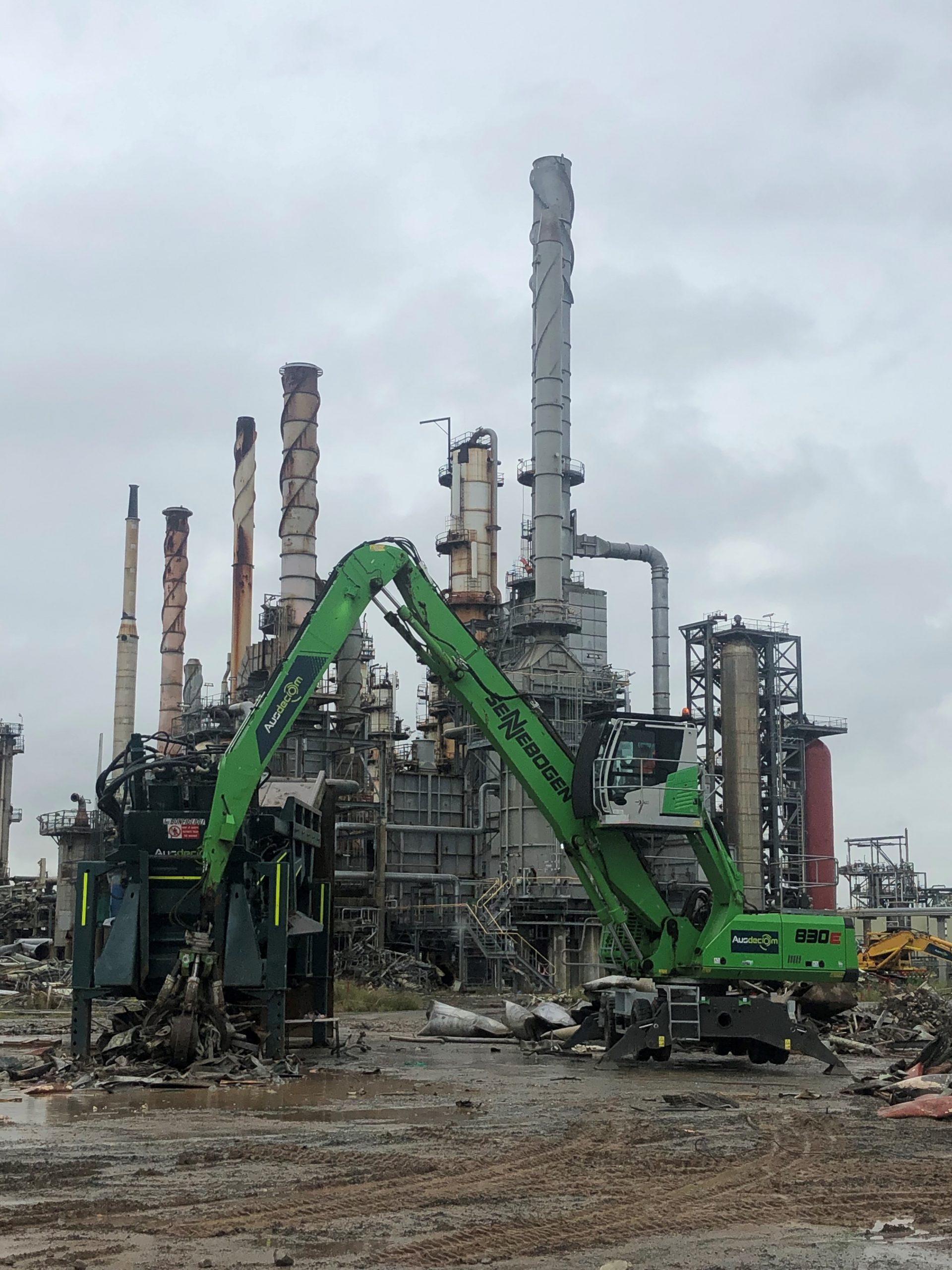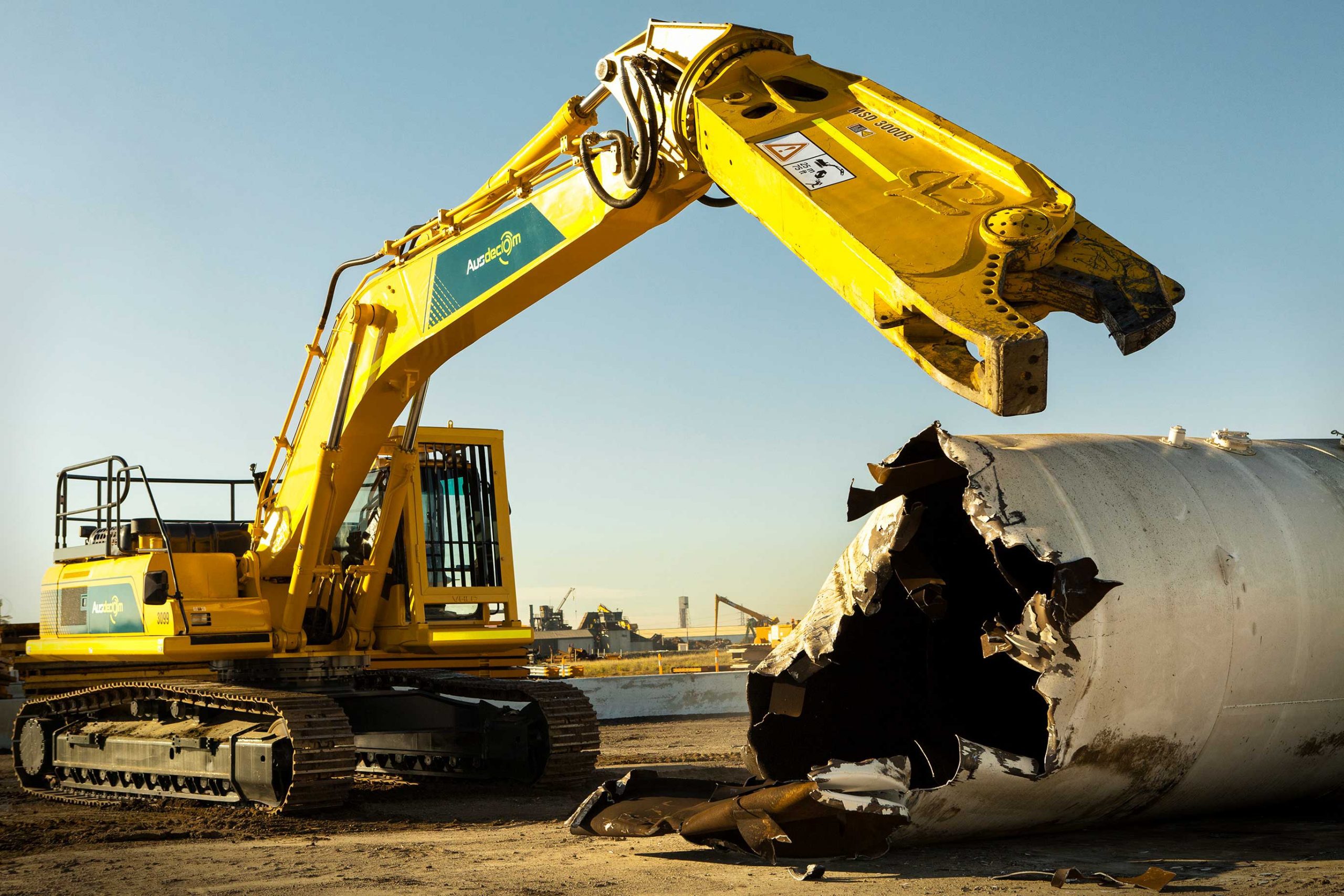Decommissioning/ Demolition Services
From initial project inception to completion, Ausdecom can help advise Clients through the different stages of the decommissioning process. This includes services ranging from front end feasibility studies, budget costing and realistic scheduling of a project to appraisals and risk assessments on the different options of demolition, dismantling or partial deconstruction.
Ausdecom own one of the largest industrial decommissioning fleets in Australia, offering specialist demolition specification excavators ranging from 20-120 tonnes. With vast interchangeable ability across the fleet’s various mechanical and hydraulic attachments our highly skilled in-house teams are capable of completing even the most complex of industrial decommissioning projects. All projects are managed in strict compliance with our ISO 45001, 14001, 9001 accredited Health & Safety, Environmental and Quality management systems.
We have demonstrable experience in the Oil & Gas, Petrochemical, Agrochemical, Power Distribution and Network, Quarries, Smelting, Heavy Industrial Manufacturing sectors, including live plant environments and redundant sites Australia wide.
For technically demanding industrial demolition projects Ausdecom has developed some of the most effective methods used anywhere in the world for the safe removal of industrial structures. We offer full project management from inception to completion including environmental remediation and recycling. This fully inclusive service helps streamline management and costs.
We have an unrivalled reputation for safe & efficient demolition techniques as well as a commendable record of operating within ‘live’ or hazardous environments.



Safe, Smart & Solution Driven
To achieve the best measure of safety and cost-effectiveness we use a mixture of demolition techniques:
Dismantling: To re-use or re-purpose redundant plant, equipment and to maintain surrounding structures, environment or building, dismantling can be performed with care and sensitivity.
Controlled Collapsing: For structures that are scheduled to be demolished or scrapped (recycled) we can use hydraulic excavators and attachments to pre-weaken it. With mechanical force, we then collapse the structure, in a predetermined manner and clean up safely at ground level.
Mechanical Demolition: This method performed by machinery alone, can be the safest form of demolition as all personnel are isolated from the demolition area.
With the ability to remove single machines, entire process plants or the deconstruction of buildings, Ausdecom’s dismantling services can be tailored to your plant, site and company needs.
To maximise residual value and offset costs associated with decommissioning, dismantling plant and equipment ensures that redundant or surplus assets can be sold for re-use. Ausdecom conduct a skilled and careful assessment of the deconstruction process to provide you with a range of project solutions. This extends to the management of unforeseeable elements, such as services or hazardous substance monitoring and plans to control dust, debris, noise, odor and vibrations.
We handle all aspects of the dismantling process, including the design plans and preparation for whole site re-location processes, management of redundant plant for relocation and operate specialist lifting, transport and shipping services.
Our team can perform total site decommissioning or a partial dismantle of structures, including any separation and protection to retain existing buildings and operate in proximity to live/working plant/equipment.
On hazardous sites, Ausdecom can perform waste management, including the on-site dismantling, deconstruction and the removal of hazardous material from plant, pipework or storage equipment.
Ausdecom carry out dismantling tasks with the highest safety standards. We can dismantle and recycle electrical systems and have experience conducting works at height and in confined spaces. Ausdecom can be assembled for plant re-location in an emergency response, following a flood, fire or any (natural or man made) disaster.
Our resource recovery aim is to recycle plant, equipment or material for future use. We focus on minimising the contamination risks and aim for the best environmental outcome of all our projects.


